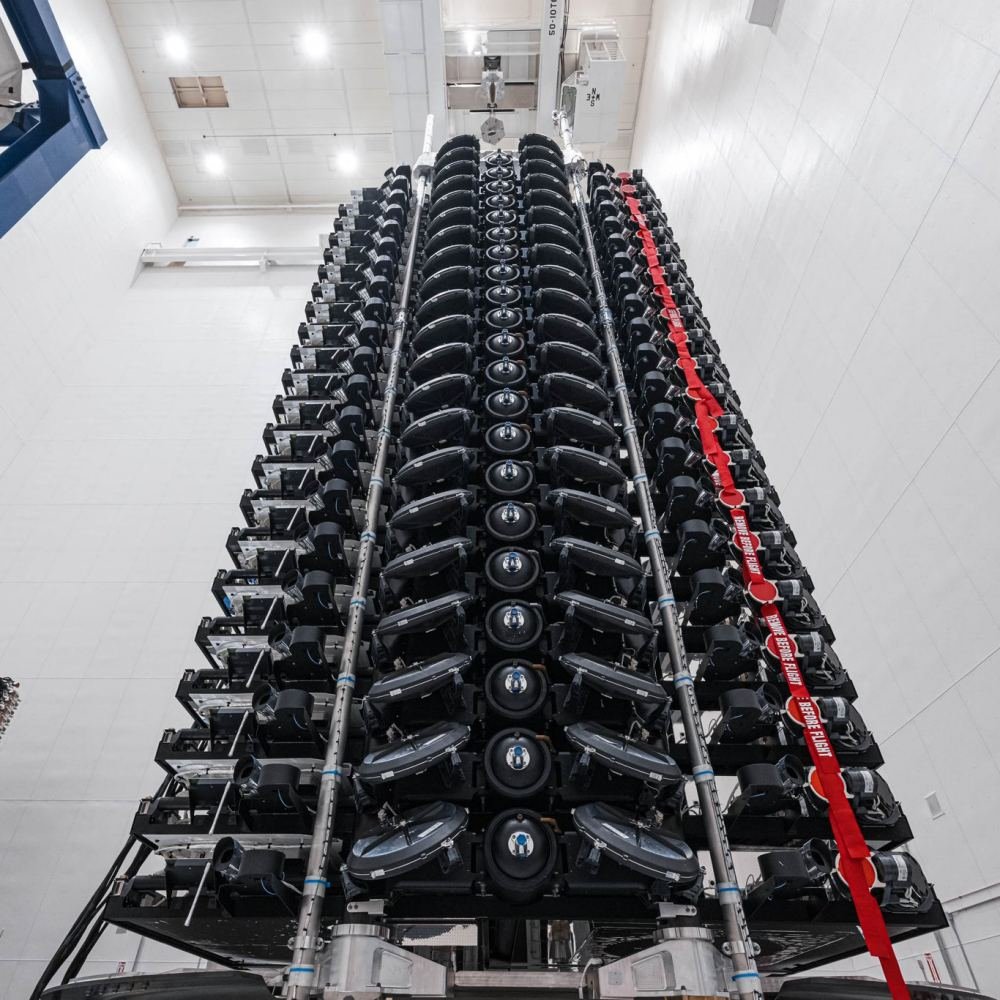
By Mark Johnson,
Published by ISPreview, 27 February 2023
Elon Musk’s SpaceX will today attempt to launch the first batch of its second generation “V2 Mini” (Bus F9-2) ultrafast broadband satellites into Low Earth Orbit (LEO), which add a bunch of new features that should help to improve the service for both consumers and businesses alike.
Customers in the UK typically pay from £75 per month, plus £460 for the regular home kit (standard dish, router etc.) and £40 for shipping on the “Standard” package, which promises unlimited usage, fast latency times of 25-50ms, advertised downloads of c. 50-200Mbps and uploads of c.5-15Mbps (speeds may change as the network grows).
NOTE: Starlink currently has c. 3,680 LEO satellites in orbit around the Earth (altitude of c. 500km+) and their initial plan is to deploy a total of roughly 4,400 by 2024, with approval granted to add around 7,500 more by the end of 2027.
As we’ve previously reported (here), Starlink has decided to change its approach to their future second generation (GEN2) satellites. The original plan was just to launch them in a single form factor aboard their new Starship rocket, but that still isn’t ready. Instead, the company decided to develop an intermediate GEN2 platform called V2 Mini (Bus F9-2), which includes some, but not all, of the GEN2 features.
The V2 Minis are bigger and heavier than their earlier satellites at 830kg (4.1 metres by 2.7 metres) – more than double the 300kg of their GEN1s, albeit smaller than their full GEN2 (Starship) platform on 2,000kg. But for that, the V2 Minis will include more solar panels, more powerful phased array antennas and the use of E-band for backhaul – this will allow Starlink to provide around 4x more capacity per satellite than earlier iterations.
Starlink Statement on V2 Mini Launch
Since the original license to operate the Starlink Generation 1 network was granted in March 2018, SpaceX has rapidly deployed satellites to bring internet to the hardest to reach places in the United States and abroad. Five years later, SpaceX has launched nearly 4,000 satellites and is providing highspeed internet to more than one million locations around the world, the majority of which are households. Starlink continues to grow rapidly, and SpaceX has raced to keep up with a surging demand
for connectivity across the United States and across the globe, especially in areas where few, if any, options for broadband connections have existed before now.
With the recent authorization of our second-generation network, or “Gen 2,” SpaceX will provide even faster speeds to more users. This new authorization enables SpaceX to launch additional, much-improved spacecraft with significantly more throughput per satellite than the first-generation systems. For the end consumer, this means more bandwidth and increased reliability. As a result, millions of more Americans will have access to high-speed internet no matter where they live.
On top of that, the V2 Minis also add new Argon Hall Thrusters for on orbit manoeuvring, which have 2.4x the thrust and 1.5x the specific impulse of their first gen thrusters. “This will also be the first time ever that argon Hall thrusters are operated in space,” said SpaceX (here).
Tech Specs of the Argon Hall Thruster
– 170 mN thrust
– 2500 s specific impulse
– 50% total efficiency
– 4.2 kW power
– 2.1 kg mass
– Center mounted cathode
However, the catch with having a bigger and more powerful satellite form factor is that SpaceX’s Falcon9 rocket can’t launch as many of them at the same time. As a result, today’s launch will only loft 21 into orbit, which compares with the 50-55 GEN1s they’ve been able to launch on a fully dedicated Falcon9. Naturally, this weighs a bit against the added capacity that the V2 Minis bring.
See: Original Article





